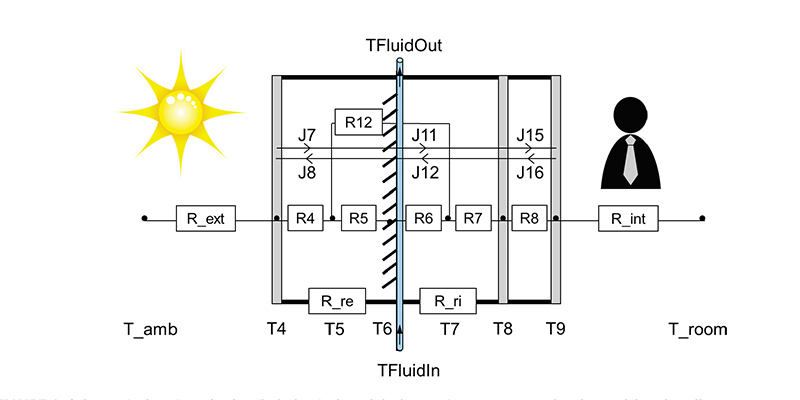Downloads
DOI:
https://doi.org/10.7480/jfde.2017.2.1740Keywords:
solar building envelopes, building-integrated solar thermal (BIST), building-integrated photovoltaics (BIPV), building-integrated solar systems (BISS), solar architectureAbstract
Active building envelopes have provided cost reductions of 40% compared to the separate installation of solar collectors on a building envelope. However, solar building envelopes are more complex than conventional building envelopes due to their additional solar function. Firstly, the paper explains this complexity before describing methods of handling it. The focus of the simulation models is to obtain high levels of accuracy at low costs. From the development of innovative solar envelopes to the general planning and construction of solar architecture, this paper provides seven recommendations to optimize the cost-benefit ratio of simulations of active building envelopes.
How to Cite
Published
Issue
Section
License
Copyright (c) 2017 Christoph Maurer, Tilmann E. Kuhn

This work is licensed under a Creative Commons Attribution 4.0 International License.
Authors or their institutions retain copyright to their publications without restrictions.
References
Cooper, P. I., & Dunkle, R. V. (1980). A non-linear flat-plate collector model. Solar Energy, 26(2), 133–140. doi:10.1016/0038-092X(81)90076-1
Hauer, M., & Streicher, W. (2013). Gebäudegekoppelte Simulation fassadenintegrierter Kollektoren mit TRNSYS. OTTI - 23. Symposium Thermische Solarenergie.
Heydenreich, W., Müller, B., & Reise, C. (2008). Describing the World with three Parameters: A new Approach to PV Module Power Modelling. 23rd European PV Solar Energy Conference and Exhibition (EU PVSEC), 2786–2789. doi:10.4229/23rdEUPVSEC2008-4DO.9.4
ISO 9806 (2013): International Organization for Standardization.
Quesada, G., Rousse, D., Dutil, Y., Badache, M., & Hallé, S. (2012a). A comprehensive review of solar facades. Opaque solar facades. Renewable and Sustainable Energy Reviews, 16(5), 2820–2832. doi:10.1016/j.rser.2012.01.078
Quesada, G., Rousse, D., Dutil, Y., Badache, M., & Hallé, S. (2012b). A comprehensive review of solar facades. Transparent and translucent solar facades. Renewable and Sustainable Energy Reviews, 16(5), 2643–2651. doi:10.1016/j.rser.2012.02.059
Saelens, D., Roels, S., & Hens, H. (2008). Strategies to improve the energy performance of multiple-skin facades. Building and Environment, 43(4), 638–650. doi:10.1016/j.buildenv.2006.06.024
Saelens, D. (2002). Energy performance assessment of single storey multiple-skin facades (Ph.D. thesis). Katholieke Universiteit Leuven, Leuven. Retrieved from https://bwk.kuleuven.be/bwf/PhDs/PhDSaelens
Sprenger, W. (2013). Electricity yield simulation of complex BIPV systems. Stuttgart: Fraunhofer-Verlag.
